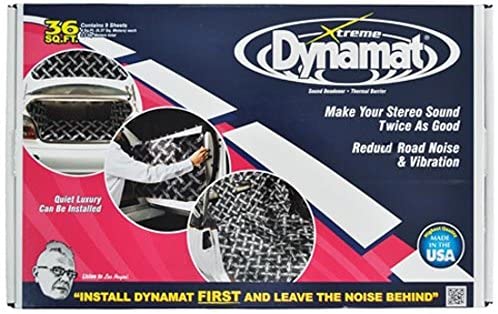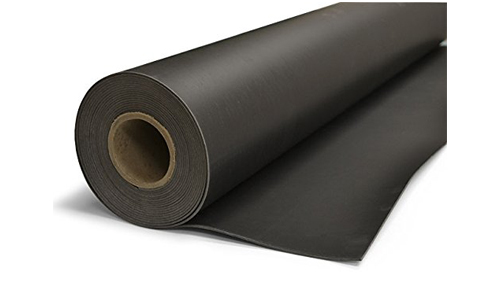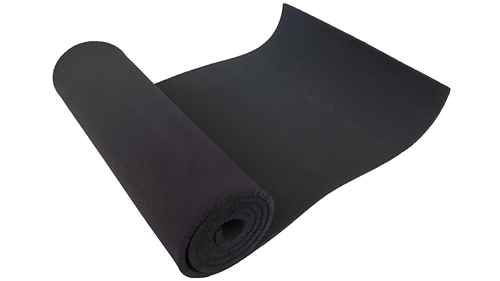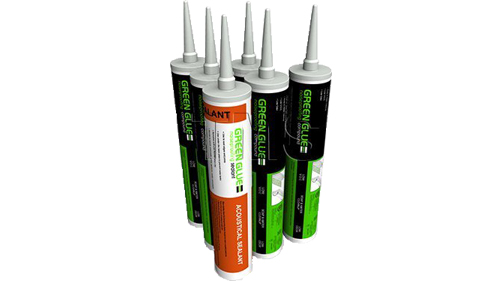 Hollow core doors are affordable, lightweight, look good, and can do all the things a door is supposed to do. Unfortunately, this type of door does not hold up so well when it comes to blocking annoying outside sounds. The good news is that you can use a few crafty tricks to get around that problem. Need to know how to soundproof a hollow core door? Here is a quick and easy guide on how to soundproof a hollow core door:
Hollow core doors are affordable, lightweight, look good, and can do all the things a door is supposed to do. Unfortunately, this type of door does not hold up so well when it comes to blocking annoying outside sounds. The good news is that you can use a few crafty tricks to get around that problem. Need to know how to soundproof a hollow core door? Here is a quick and easy guide on how to soundproof a hollow core door:
- Add mass to the door using sound-deadening fiberboard mats, fiberglass sheets, or mass-loaded vinyl (MLV).
- Seal the cracks in the door frame.
- Install a sound deadening door sweep.
- Place heavy furniture around the door.
Some of the steps above can be tricky, so make sure to read the detailed guide below to get all the key information. Additionally, there are a few other tips on how to soundproof a hollow door, including by using everyday household items. To learn more about these DIY ideas, keep reading.
Things You Will Need
Before you try the steps explained below, you might need some or all of the following:
-
Sound-deadening vehicle fiberboard mats, such as the Dynamat Thick Self-Adhesive Sound Deadener or the HushMat 10400 Ultra-Black Foil Floor Kit with Damping Pad
-
Fiberglass sheets like this cncarbonfiber Carbon Fiber Sheet
-
This Noise Grabber Mass-Loaded Vinyl or another MLV roll
-
Some Green Glue Noiseproofing Compound or another acoustic caulk
-
Weather-stripping seals such as this CloudBuyer Weather-Stripping Seal for Doors and Windows
-
A door sweep/draft stopper like the Suptikes Door Draft Stopper and Under-Door Seal
-
These Soundproof Store 4492 Acoustic Wedge Soundproofing Studio Foam Tiles, or similar
-
NICETOWN Full Shading Curtains or similar noise-reducing curtains
-
This Audimute Sound Absorption Sheet Sound-Dampening Blanket
Soundproofing A Hollow-Core Door:
Step 1: Add Mass to the Door
First and foremost, you want to add as much mass to the door as possible. Mass is the only thing that can effectively block sound waves.
However, the problem here is that attaching heavy and bulky objects to a door can make it difficult to open and close it. Here is where mass-loaded sheets come in. These are made of extremely dense materials but are also thin, relatively lightweight, and easy to install.
Examples include fiberglass and MLV sheets, as well as sound-deadening fiberboard mats of the type that is often used in vehicles.
Regardless of the product you choose, for best results, make sure to attach it to both sides of the door.
It is also a good idea to stick the sound-blocking material to a sheet of drywall or wood that you then screw to the door.
If you apply the fiber or MLV sheet directly onto the door, it might leave difficult-to-peel adhesive when you remove it later.
Besides, the wood or drywall will add an extra layer of mass that will help with the sound-blocking.
Step 2: Seal the Cracks in the Door Frame
The next thing you want to do is fill in any gaps in the door frame, however tiny they might be.
If air can pass through, so can sound. So, make sure to inspect the frame carefully and seal any cracks you find with an acoustic caulk.
You should also consider installing a soundproof door strip around the door’s edge, such as weather stripping or a door gasket. That will make the gap between the door and the frame much smaller.
Step 3: Install a Door Sweep
Now that you have taken care of the gaps in and next to the door frame move on to the bottom of the door.
The gap between the door and the floor is a major weak link in the soundproofing of any room.
To address that problem, get yourself a door sweep or a door draft stopper. It will not only seal the bottom gap and help block unwanted outside noise, but it can also improve the thermal insulation of the room.
What’s more, a door sweep will also keep out insects and other small critters. If you are not keen on drilling holes in the door to screw the door sweep, there are many products on the market that come with a self-adhesive strip that are very easy to install.
Step 4: Place Heavy Furniture Around the Door
If you have always wanted to rearrange your furniture but never made the time, now is your moment.
Unleash your inner interior designer and move any bulkier furniture, such as bookcases or chests of drawers, near the door.
That will not have any effect on the door itself, but it will improve the soundproofing of the surrounding walls and the overall sound quality.
More Tips on Hollow Core Doors Noise Reduction
Acoustic Foam Tiles
Acoustic foam does not block sound, but its porous texture is highly effective at absorbing it. That helps minimize echo and reverberation.
So, after you install mass-loaded sheets onto your door, you might want to consider adding acoustic foam tiles for added effect.
Hang Sound-Blocking Curtains
Much like acoustic foam, sound-blocking curtains cannot block sound but can help muffle it. They could be an option if you don’t want or cannot tamper with the door itself.
Instead, simply hang a few layers of high-quality sound-blocking curtains, preferably on both sides of the door.
If the unwanted noise is coming not just through the door but the windows as well, hang some curtains there too.
Sound Barrier Blankets
Sound barrier blankets are an easy and hassle-free, albeit somewhat less effective alternative to mass-loaded sheets.
Acoustic blankets have sound-absorbing effects that are similar to those of curtains and foam.
However, some blankets on the market also feature materials that can help block sound, too. They are also very simple to install: just screw or glue them on both sides of the door, and you are all set.
DIY Alternatives to Common Soundproofing Products
If you are on a tighter budget or in a temporary living arrangement, you may not want to splurge on expensive soundproofing materials.
The good news is that there are some common household items that you can use as substitutes for store-bought products.
While these DIY alternatives are, admittedly, less effective, they can still make a considerable difference to the sound quality in your room.
For instance, you can substitute sound-blocking curtains with regular heavy curtains made of velvet or other thick fabric. Duvets, comforters, carpets, and old mattresses can replace sound barrier blankets.
You could also attach a few layers of thick carpet pieces or a plank of wood to the bottom of the door to serve as a draft stopper.
Instead of professional weather stripping, you can just use a few coats of duct or electrical insulation tape. And if you don’t have an acoustic caulk, replace it with a regular silicone-based bathroom sealant.
Final Thoughts
Door manufacturers make hollow core doors for three reasons: to save money, time, and valuable construction resources.
While that makes for a much cheaper and lightweight product, hollow doors fail spectacularly when it comes to blocking sound. Fortunately, there are a few things you could do to soundproof them, such as:
- Adding mass to the door
- Sealing the cracks in the door frame
- Installing a door sweep or a draft stopper
- Placing heavy furniture around the door
However, the most effective solution is to replace the door with a solid core door.




